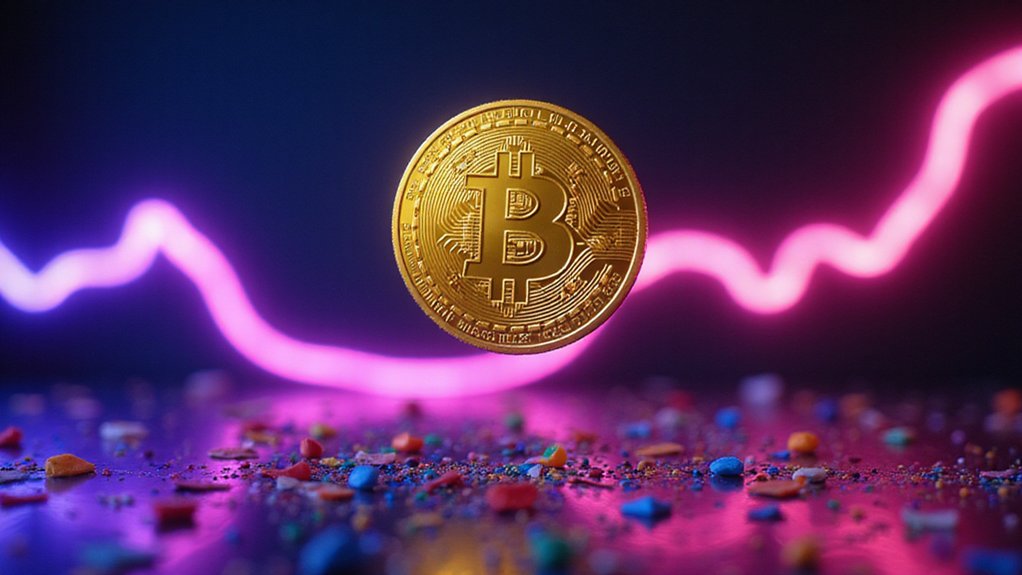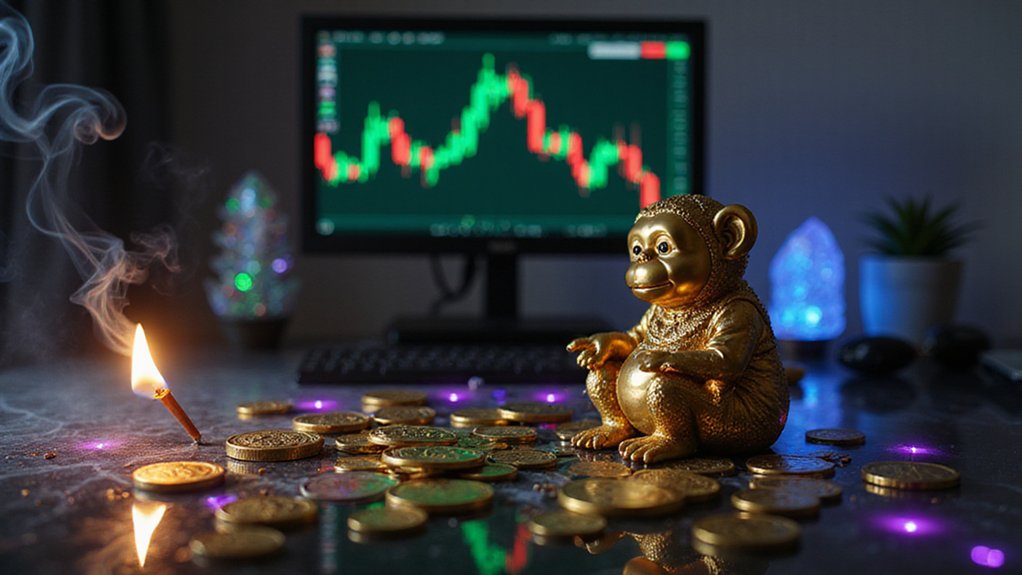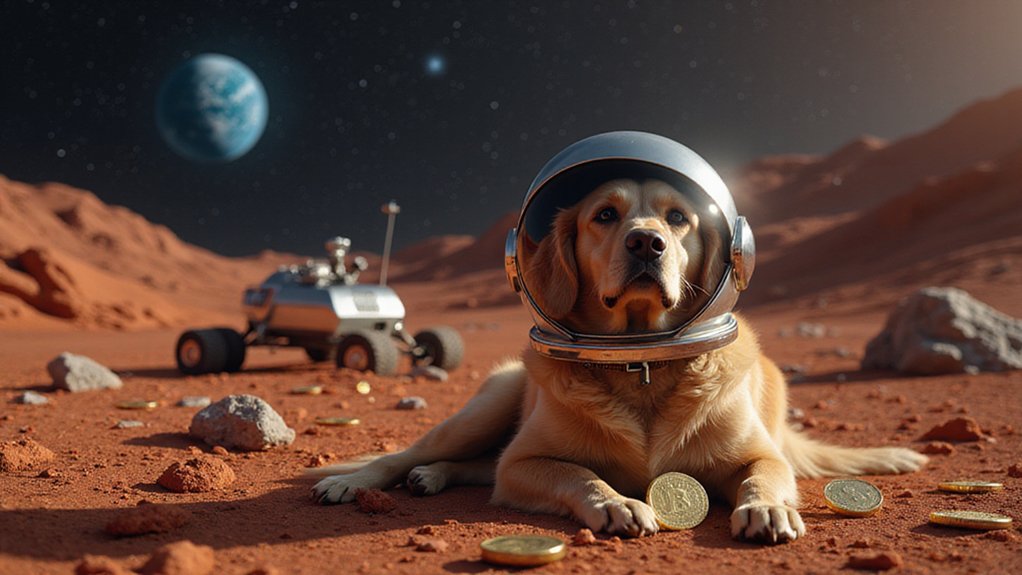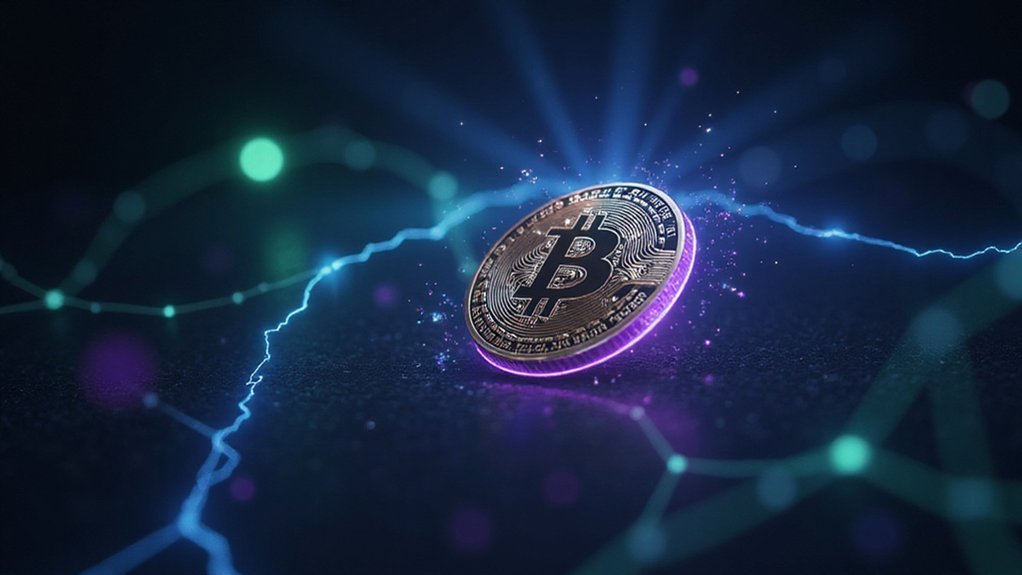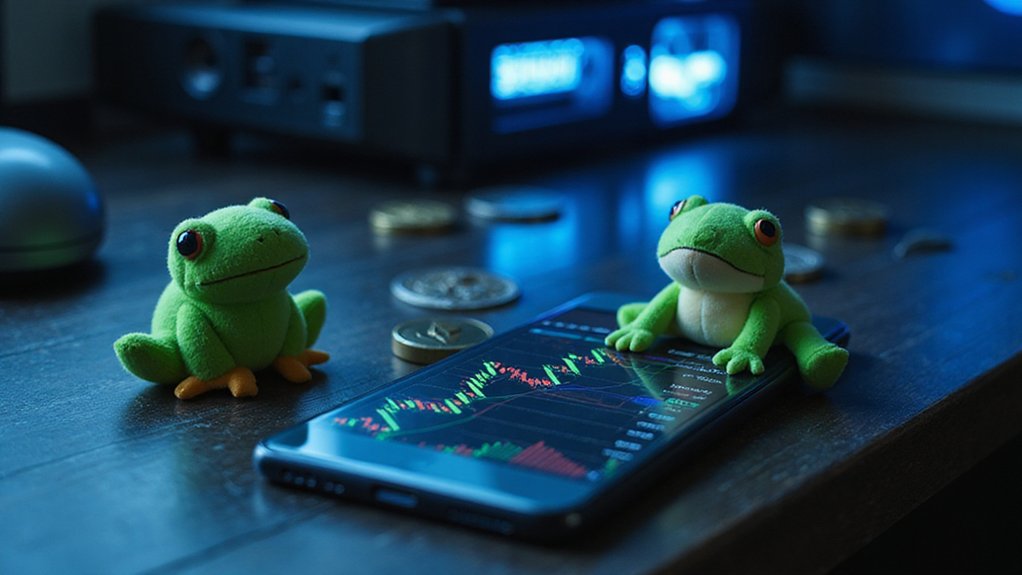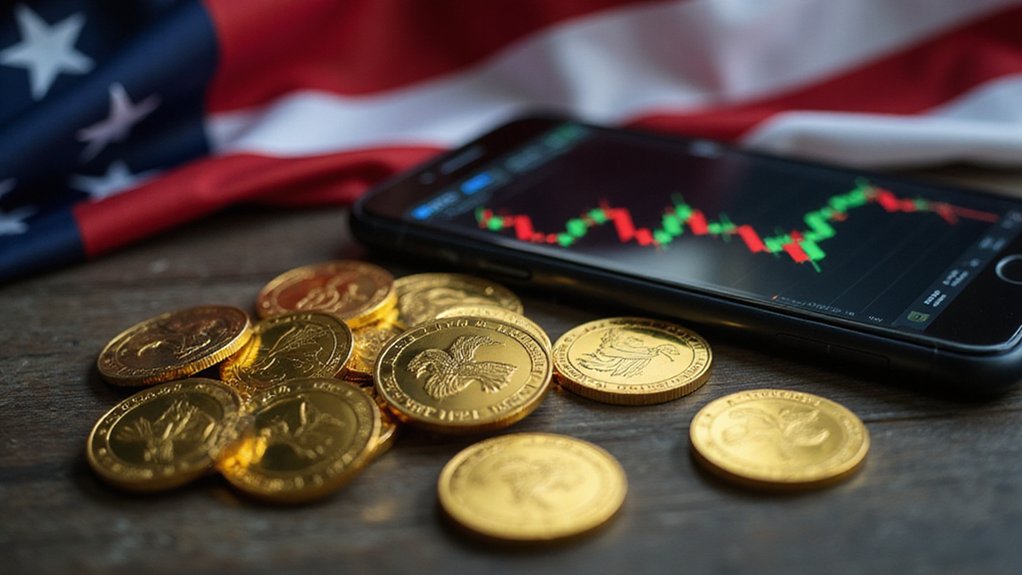Meme coins emerged as digital assets born from internet jokes and viral cultural moments rather than technological innovation, transforming fleeting online humor into speculative financial instruments. These cryptocurrencies—exemplified by Dogecoin’s rise from satirical origins—lack intrinsic utility yet command substantial market attention through community-driven hype and FOMO-fueled trading. Operating more like digital collectibles than traditional currencies, they exhibit extreme volatility while fostering communities united by shared cultural references and the peculiar alchemy of transforming absurdity into economic phenomena.
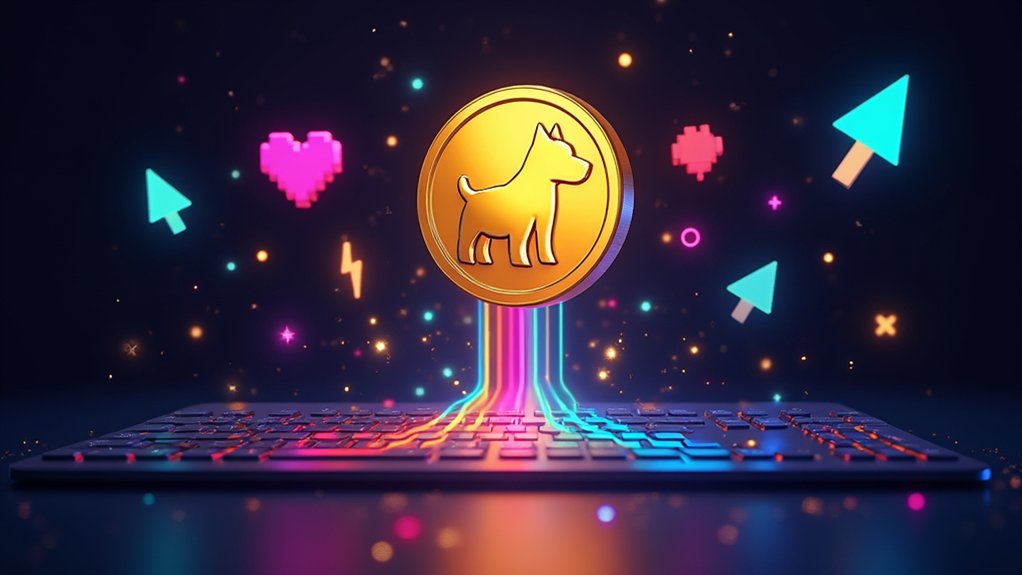
While traditional cryptocurrencies emerged from sophisticated technological foundations and ambitious visions of decentralized finance, meme coins represent a peculiar evolutionary branch—digital assets born from internet jokes, viral trends, and the collective whimsy of online communities.
These cryptocurrencies derive their existence not from groundbreaking blockchain innovations or revolutionary financial protocols, but from humorous concepts and internet memes that capture fleeting cultural moments.
Unlike their more serious counterparts, meme coins often lack intrinsic utility or substantial technological underpinnings, functioning more as digital collectibles created primarily for entertainment and social interaction purposes.
The market behavior of meme coins defies conventional financial logic, with prices capable of skyrocketing based purely on fear of missing out (FOMO) and viral momentum rather than fundamental asset value.
Meme coin valuations surge on viral hype and FOMO rather than any meaningful economic fundamentals or technological merit.
This speculative frenzy creates a peculiar dynamic where continuous influxes of new buyers—reminiscent of Ponzi-like structures—sustain market capitalizations that can collapse as rapidly as they ascend.
The volatility is breathtaking: massive price surges followed by equally steep declines, all driven by sentiment rather than substance.
Dogecoin stands as the most prominent example, achieving remarkable market capitalization despite its meme origins. Created as a joke by Billy Markus and Jackson Palmer, it has since evolved from its humorous beginnings into a significant digital currency with a dedicated community.
Other iterations draw inspiration from internet characters, celebrities, or current events, fostering online communities united by shared humor and cultural references.
The phenomenon bears striking resemblance to collectible crazes like Beanie Babies—speculative bubbles wrapped in social currency. By 2021, the meme coin landscape had exploded to encompass 124 meme coins circulating in the market, demonstrating the rapid proliferation of these digital assets.
From a regulatory perspective, the U.S. Securities and Exchange Commission views meme coins as non-securities, classifying them as cultural or entertainment assets rather than investment vehicles.
This designation means participants lack federal securities protections, despite the SEC’s warnings about their speculative nature and utility deficits.
The risks are substantial: meme coins represent speculative investments often criticized as get-rich-quick schemes or outright scams.
Their lack of practical application or technological innovation, combined with extreme price volatility and regulatory blind spots, creates a perfect storm of financial uncertainty. The trading activity has reached staggering proportions, with daily volumes exceeding $6 billion in early 2025.
Yet somehow, certain meme coins have transcended their origins, acquiring social currency that extends beyond mere financial speculation—a evidence to the internet’s remarkable ability to transform digital jokes into legitimate (if bewildering) economic phenomena.
Frequently Asked Questions
How Do I Safely Store Meme Coins in a Digital Wallet?
Storing meme coins safely requires hardware wallets for long-term holdings—their offline nature provides superior security against the digital mayhem that occasionally befalls exchanges.
Software wallets suffice for active trading, though one must implement two-factor authentication and robust passwords.
Cold storage remains paramount for substantial holdings, while hot wallets facilitate frequent transactions.
Regular backups of private keys prove essential, as does avoiding prolonged storage on exchanges (tempting though their convenience may be).
What Are the Tax Implications of Trading Meme Coins?
Trading meme coins triggers taxable events with each transaction—purchases, sales, swaps, even conversions to stablecoins.
Short-term holdings face ordinary income rates (10-37%), while long-term positions qualify for preferential capital gains treatment (0-20%).
The IRS requires meticulous transaction tracking across decentralized platforms, creating compliance nightmares for traders who’ve made dozens of swaps.
Remarkably, tax obligations persist regardless of whether one’s chosen dog-themed token proves fraudulent—adding insult to financial injury.
Can Meme Coins Be Used for Actual Purchases or Transactions?
Meme coins can technically facilitate actual purchases, though practical utility remains limited.
While blockchain technology enables peer-to-peer transactions, merchant acceptance is sparse—most retailers won’t touch these volatile digital assets.
Some communities have leveraged meme coins for charitable initiatives and crowdfunding (ConstitutionDAO’s $47 million effort being notable), but their primary function remains speculative trading rather than genuine commerce.
The gap between technological capability and real-world adoption proves remarkably persistent.
How Do I Identify Legitimate Meme Coin Projects Versus Scams?
Identifying legitimate meme coin projects requires scrutinizing team transparency, technical documentation, and community engagement metrics.
Scammers typically deploy anonymous teams, plagiarized whitepapers, and artificially inflated social media presence.
Legitimate projects demonstrate verifiable developer credentials, audited smart contracts, and organic community growth.
The irony remains palpable: investors must conduct rigorous due diligence on assets originally designed as internet jokes, yet this analysis becomes essential when speculative fervor transforms memes into multimillion-dollar market capitalizations.
What Happens to Meme Coins When the Original Meme Loses Popularity?
When meme coins lose their cultural moment, the results prove predictably brutal.
Their inherent lack of fundamental value becomes starkly apparent as community enthusiasm evaporates alongside social media buzz.
Price volatility intensifies dramatically—rapid drops dwarf any fleeting pumps from nostalgic revivals.
The ecosystem collapses: speculative traders flee, market manipulation schemes multiply (preying on desperate holders), and what remains resembles a digital graveyard of abandoned communities clutching worthless tokens tied to forgotten internet jokes.
